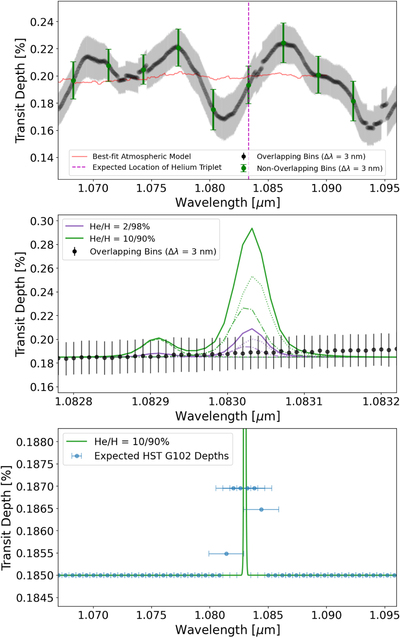Image Details

Caption: Figure 10.
Search for the 1.083 μm helium triplet. While it is expected that the planet is undergoing mass loss, little evidence could be found via this tracer with the data collected with HST WFC3 G102. Top: the higher-resolution HST WFC3 G102 spectrum extracted in this work. The bins are spaced by 0.1 Å but have a bandwidth of 3 nm and, therefore, are overlapping. The location of the peak of the helium triplet signature is indicated by the purple dashed line. The best-fit atmospheric model from Section 3.1 is also shown (red) for context, as are a set of bins which are not overlapping (green). Middle: expected signal of the helium triplet derived from simulations of atmospheric escape driven by photoevaporation (A. Allan et al. 2023, submitted). The line is formed of three segments (dotted, dashed, and dotted–dashed) which together produce the final signal (solid). The expected triplet signature is shown for two He/H ratios. The HST WFC3 G102 data are also shown, with no excess absorption seen in these bins. Bottom: our simulated helium signature when convolved with the bins extracted. As the spectral bins are overlapping, the expected signal in these bins from the triplet appears as a plateau. The size of the signal (∼20 ppm) is much smaller than the uncertainties on each data point (∼135 ppm), even in the 10/90 He/H case. Thus we conclude that the data are not sensitive enough to detect the expected triplet signature.
Copyright and Terms & Conditions
© 2023. The Author(s). Published by the American Astronomical Society.












